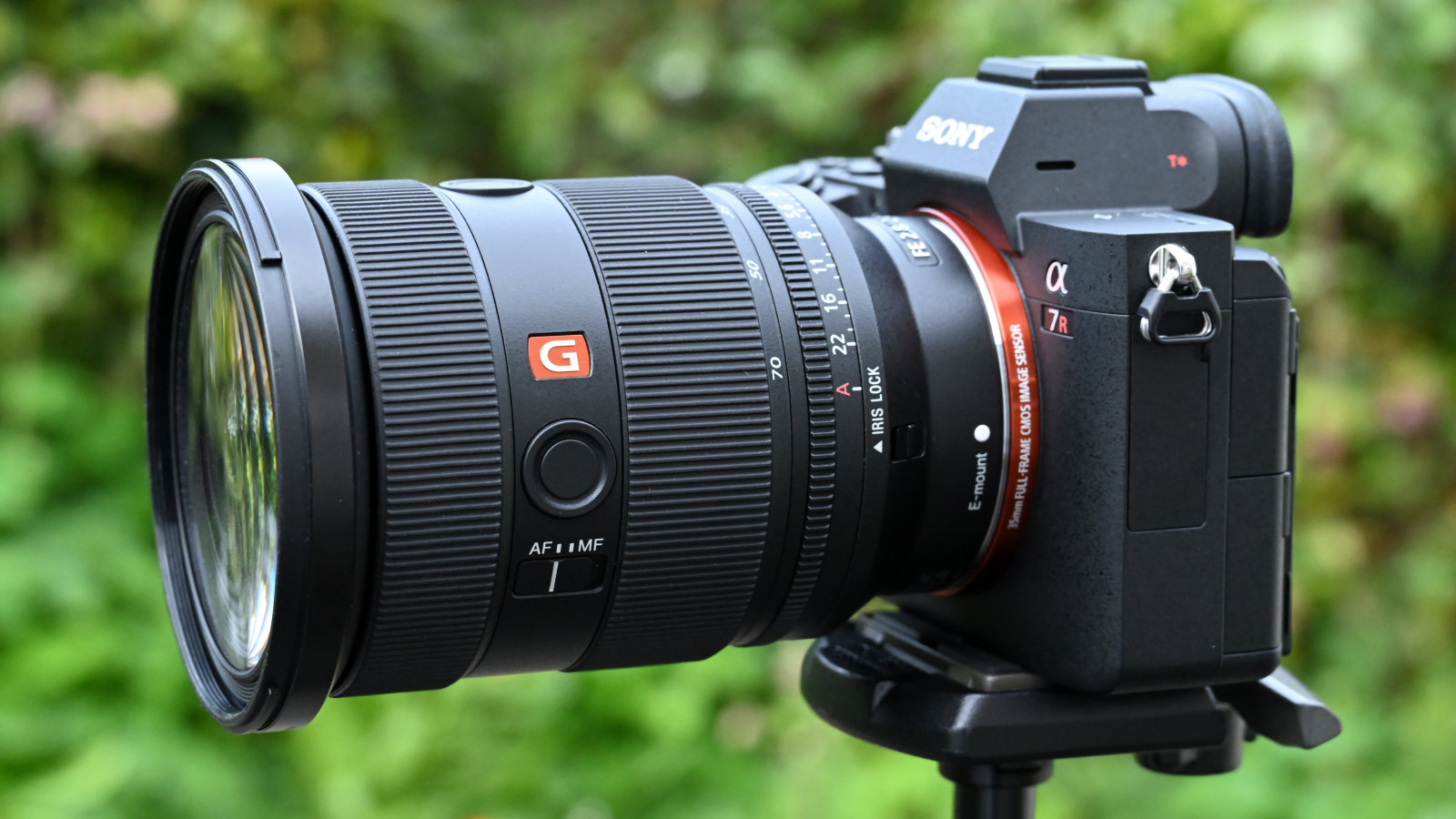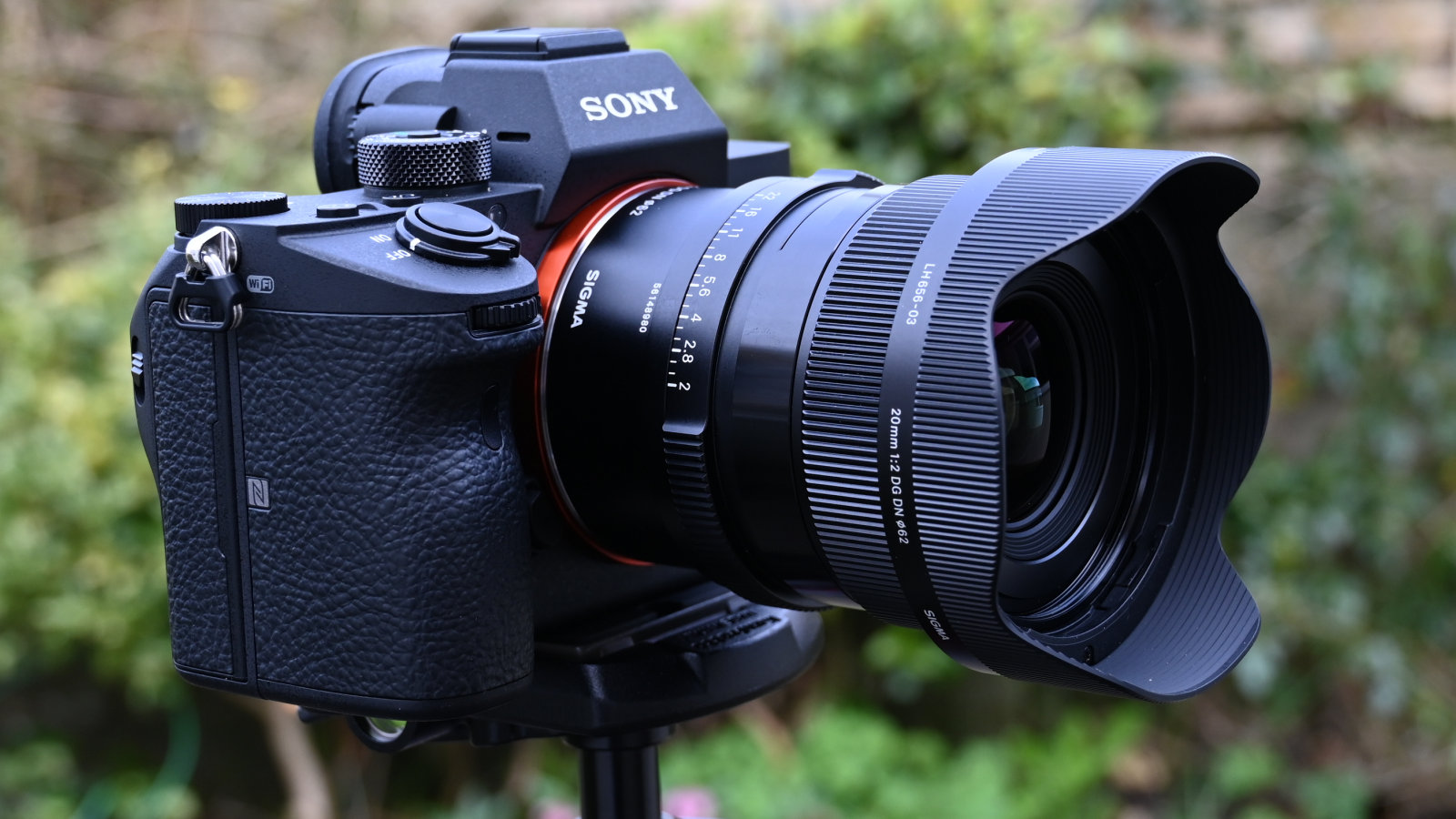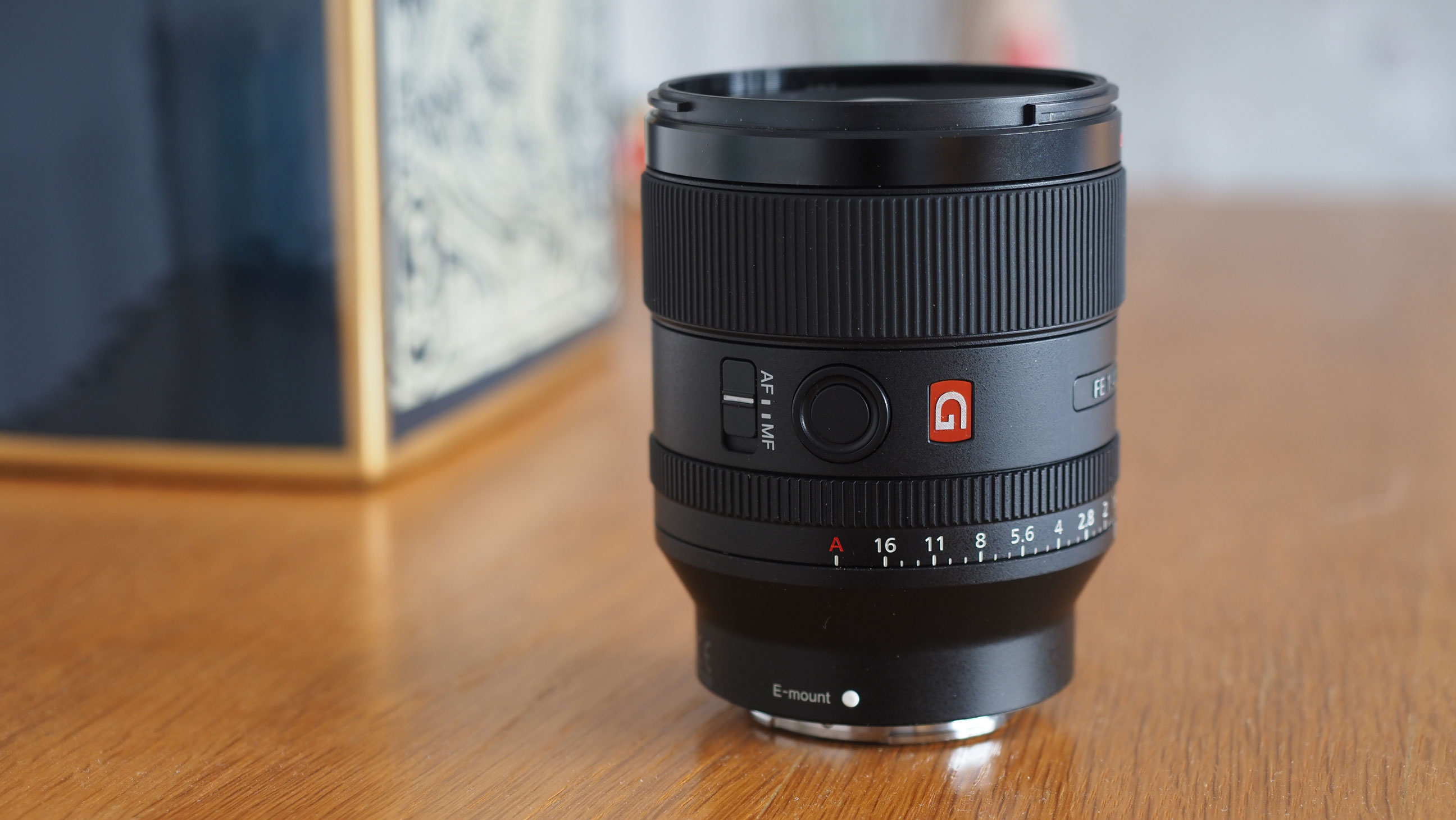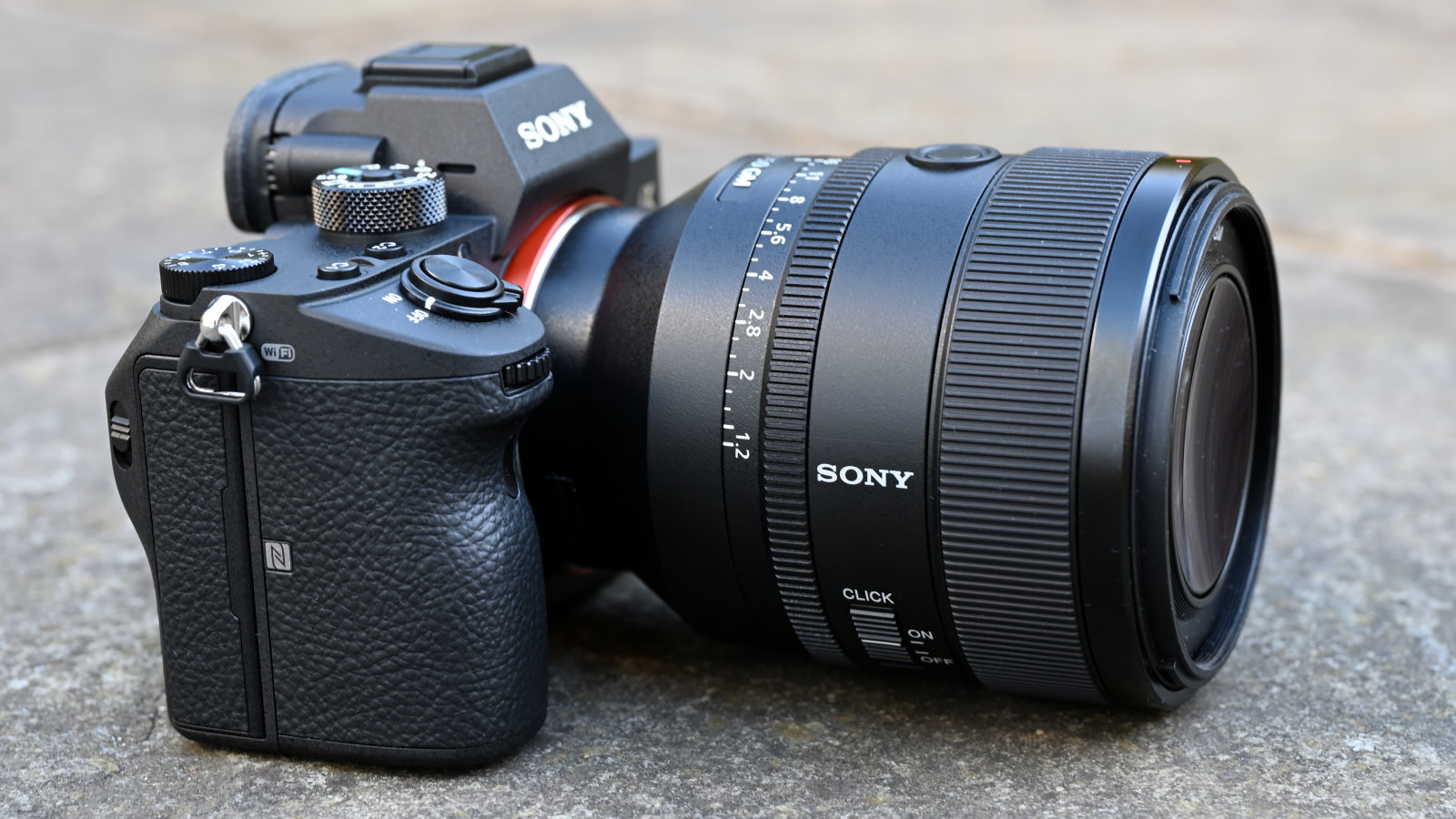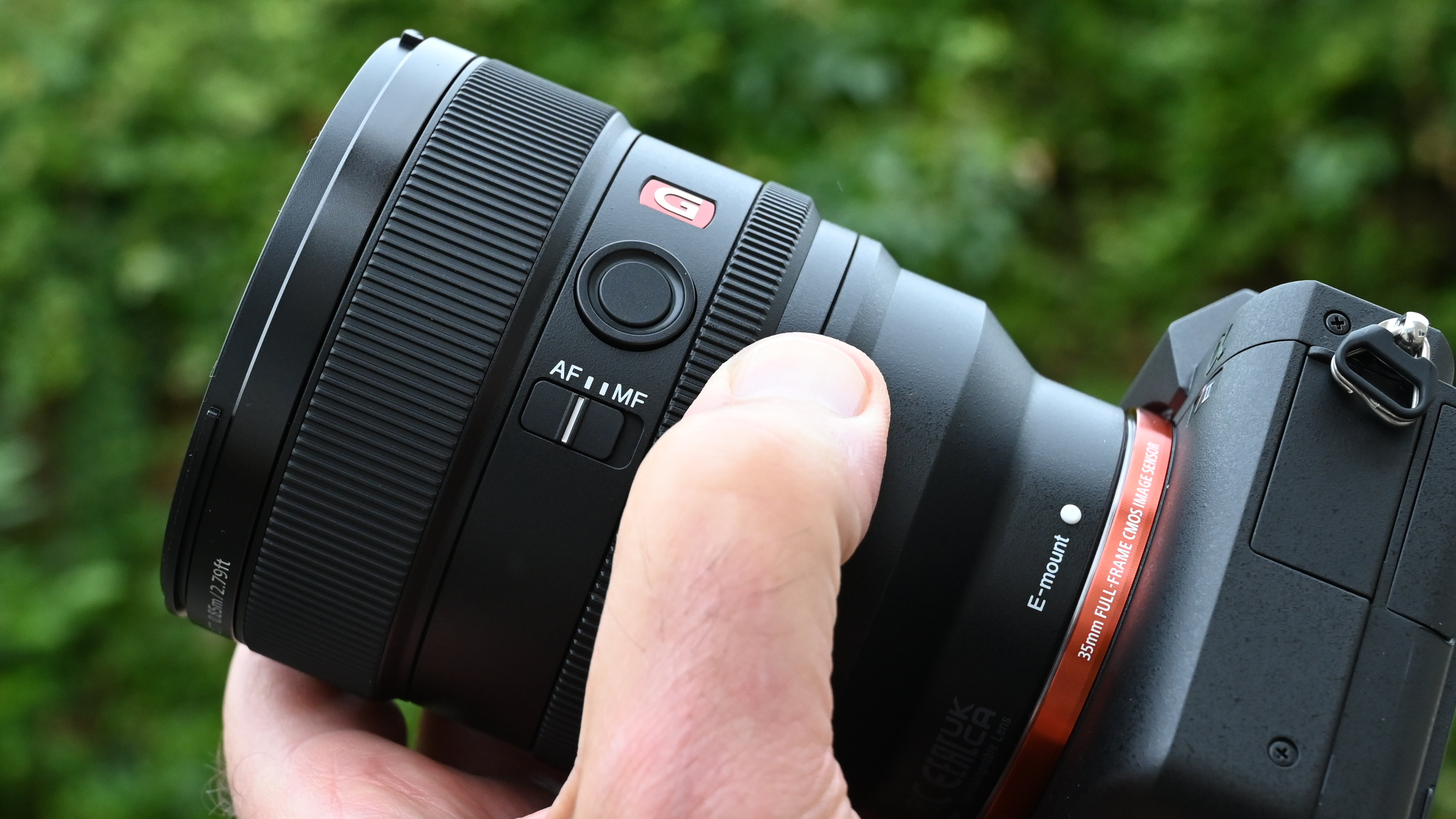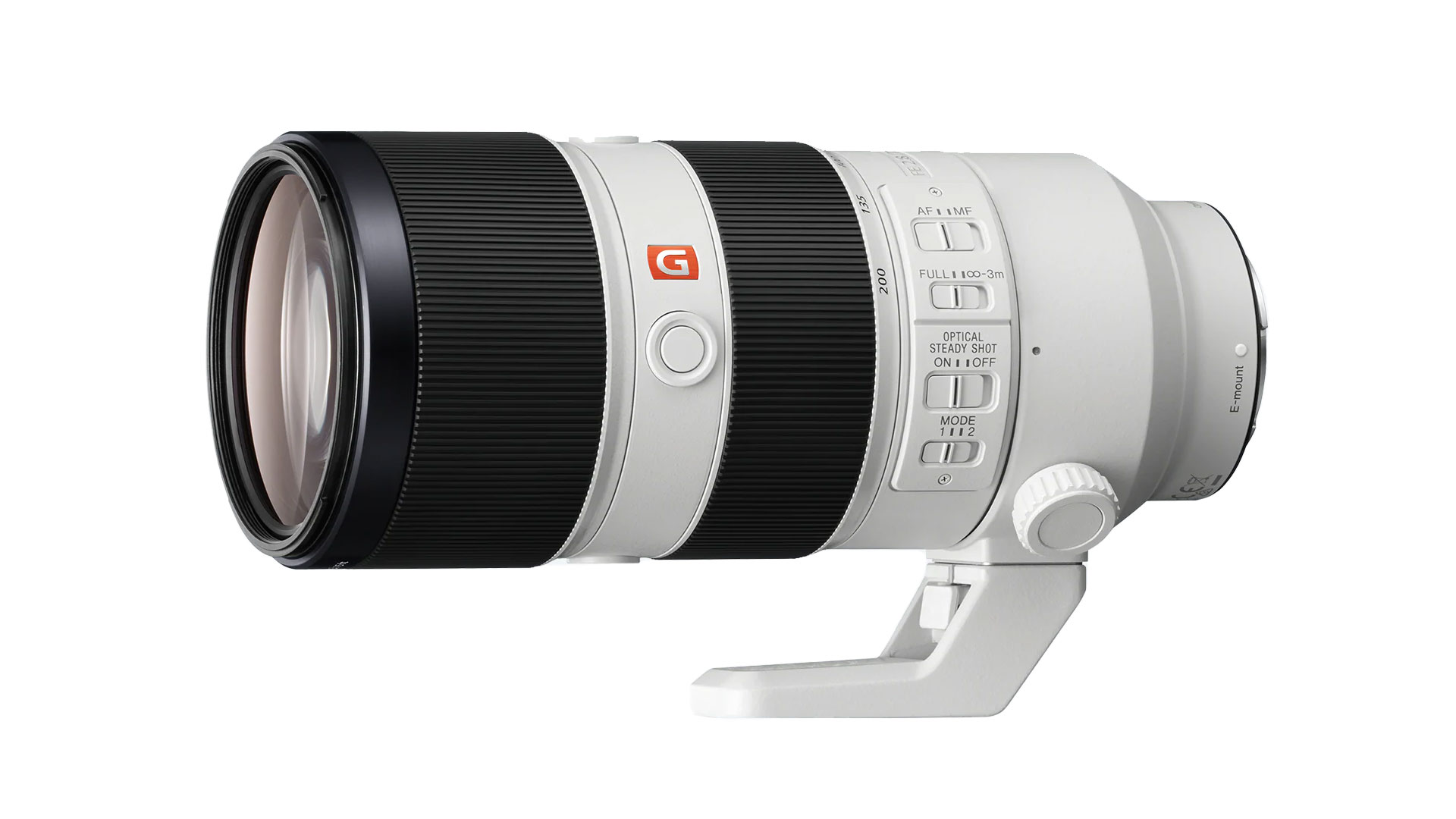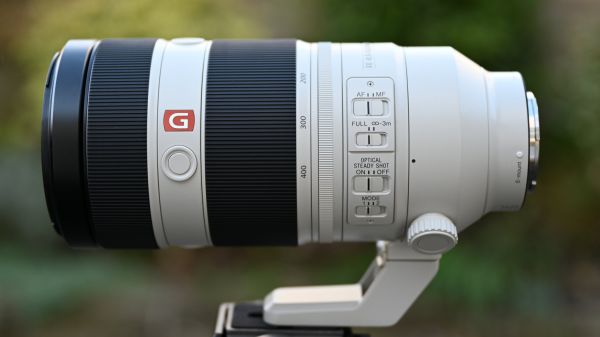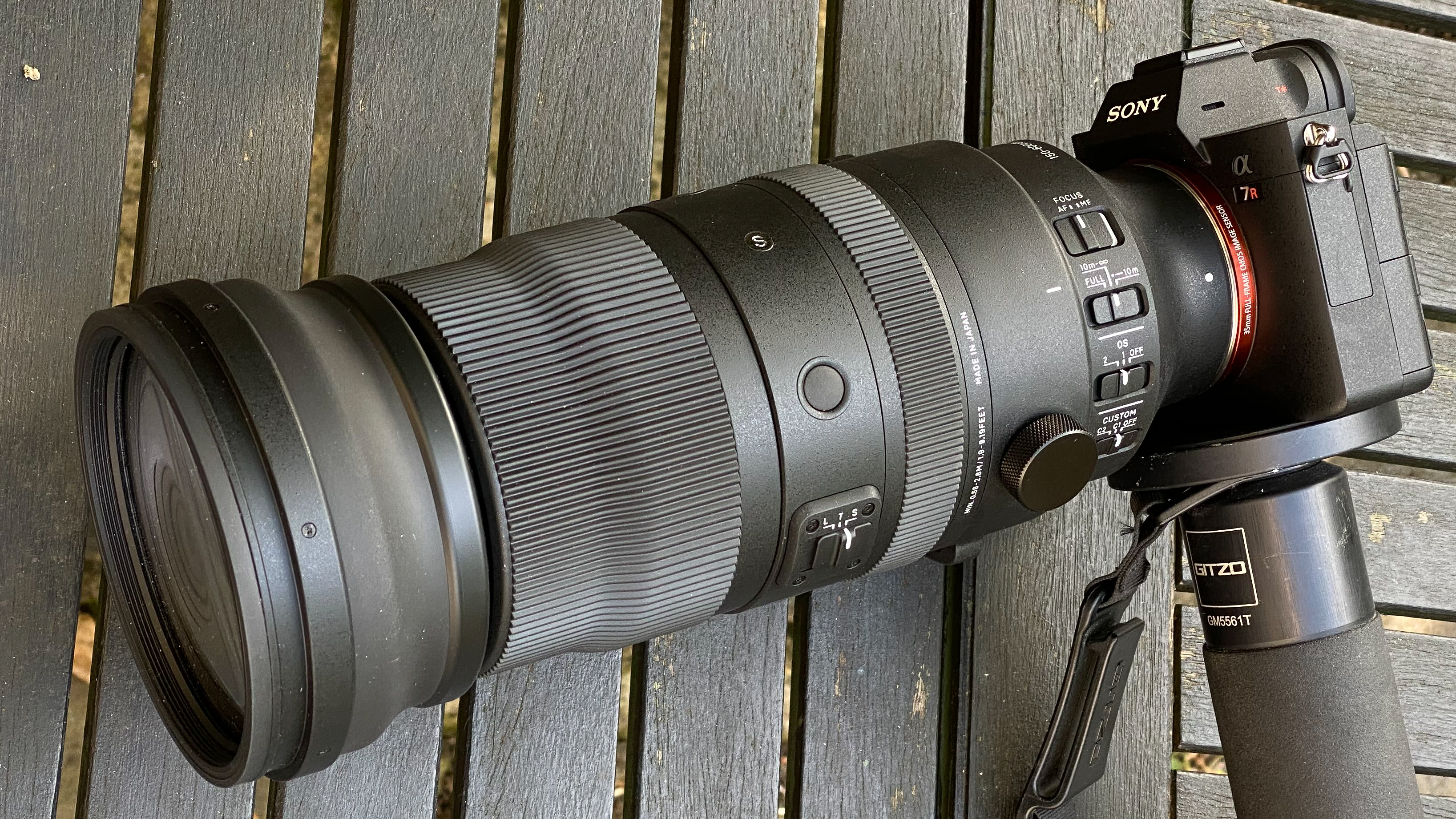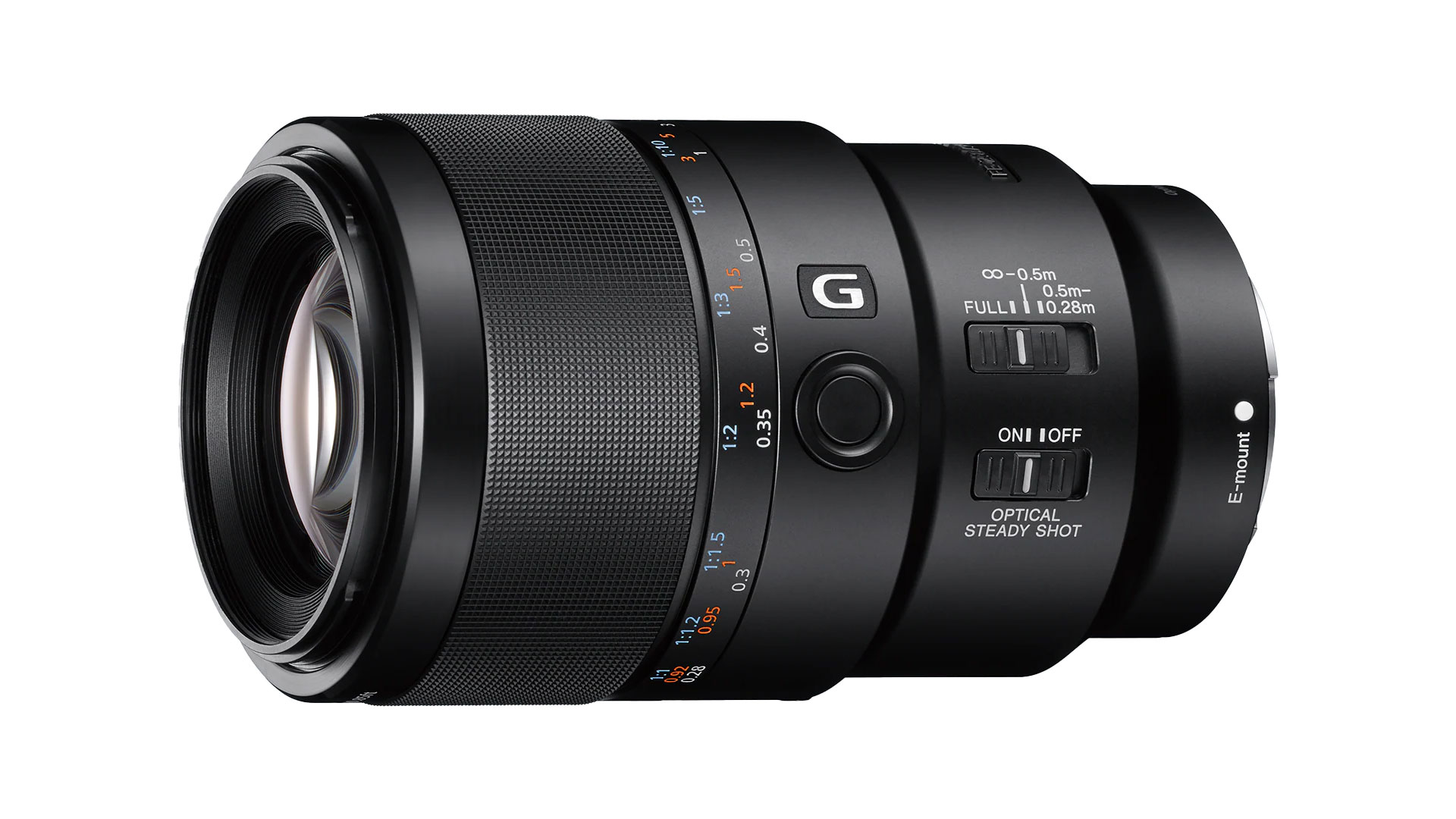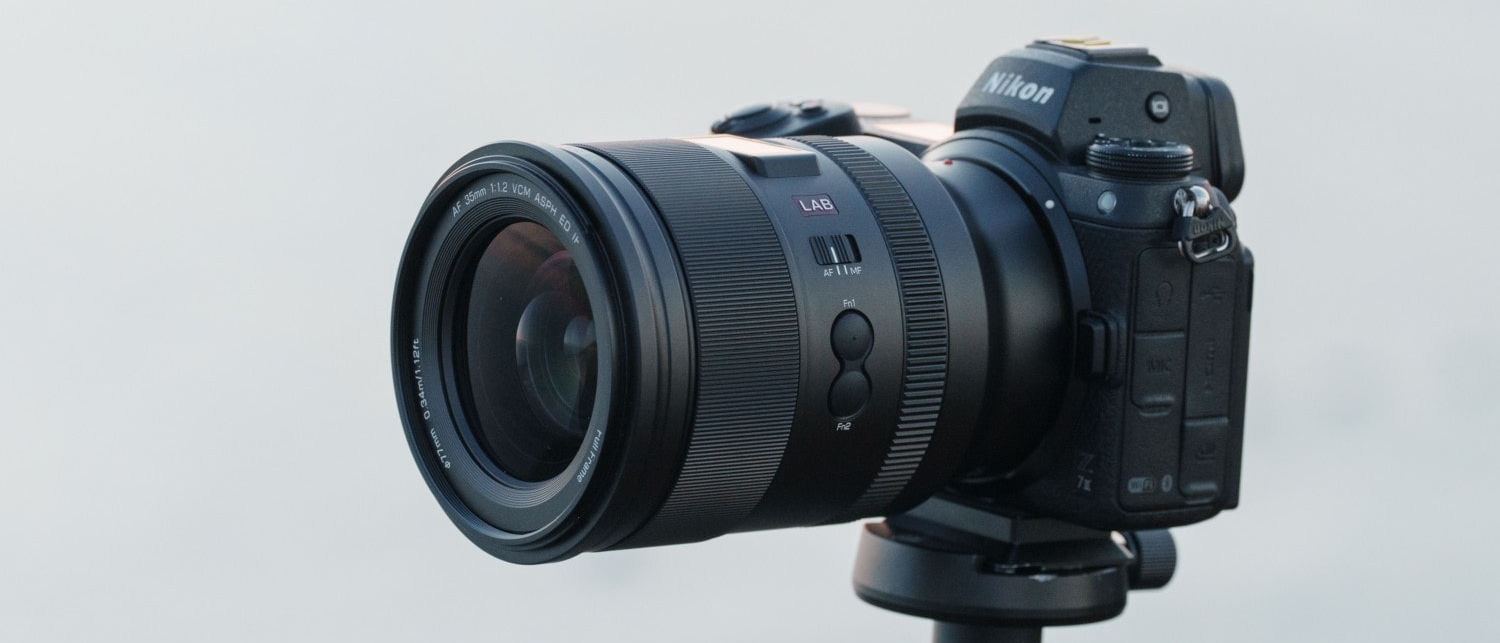The best lenses for the Sony A7R III and A7R IV: primes and zooms for ultimate resolution
The best lenses for the Sony A7R III and A7R IV will resolve the finest of detail, making the most of these high-resolution full-frame cameras.
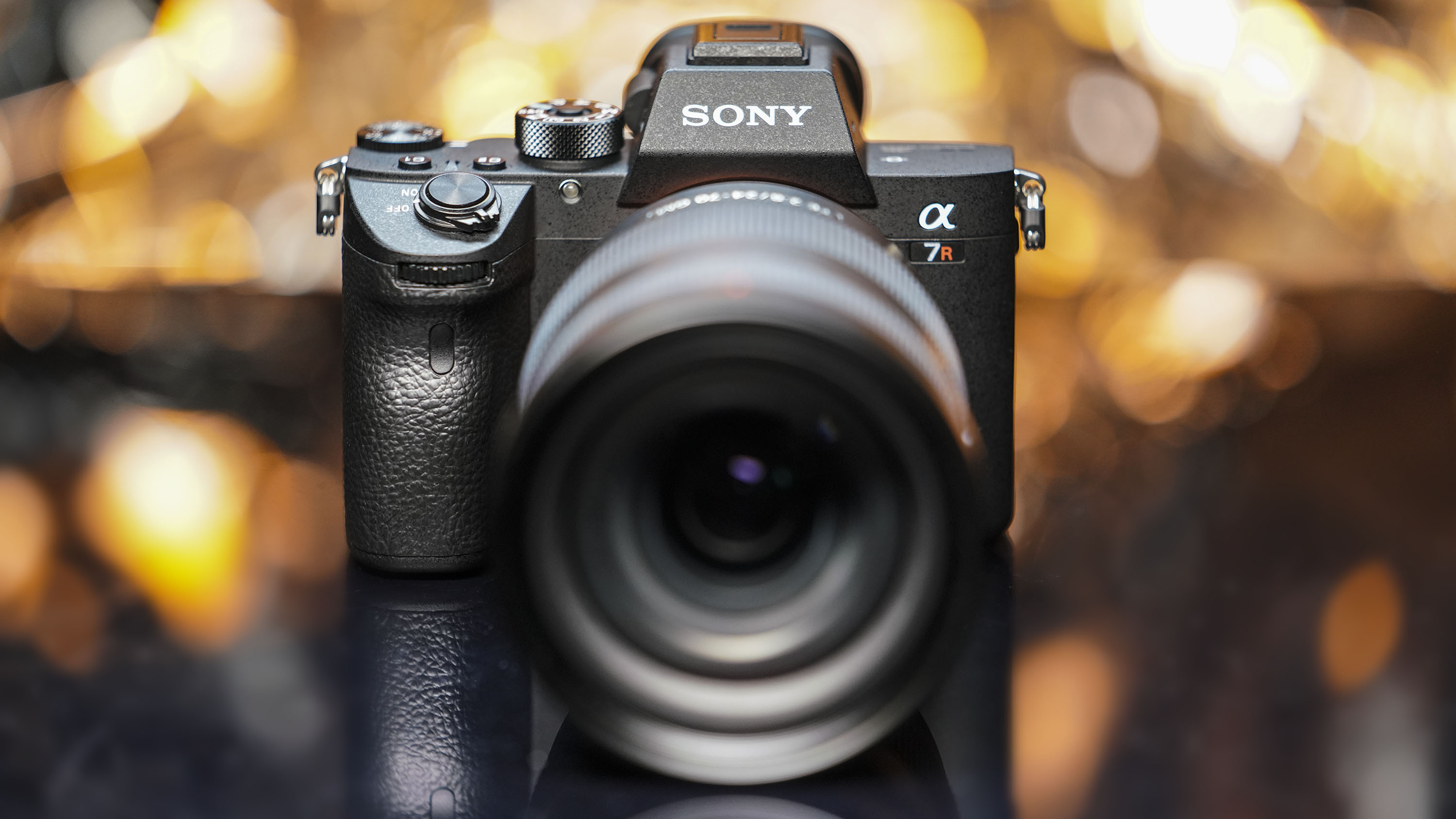
I feel that the best lenses for the Sony A7R III and A7R IV play to the key strength of these full-frame cameras, feeding their high-resolution image sensors with everything they need to resolve the utmost in ultra-fine detail and texture. And let’s face it, the A7R series of mirrorless cameras are all about the details, with mighty megapixels under the hood for unleashing incredible resolving power. However, that won't mean a jot if you pair these cameras with lenses that don't achieve the same high standards. That's where this guide comes in.
With many more years under the mirrorless full-frame belt than Canon and Nikon, Sony has had the time to develop an incredible range of G and G master lenses. These ‘Gold’ standard optics have built an enviable reputation for delivering stellar sharpness, with premium optical prowess that enables you to really get the best out of A7R series cameras. And to maintain optimum sharpness in handheld shooting, these cameras have highly effective in-body image stabilization so, up to a point, in-lens stabilization is unnecessary and designers can focus fully on optical quality. The exception is in telephoto and macro lenses, where optical stabilization can team up with IBIS for greater performance.
I've aimed to pick out a range of lenses in different focal lengths for this guide, keeping a mindful eye on them pairing perfectly with the A7R III and A7R IV. That’s what merits inclusion on the hit list. Naturally, for both camera bodies and lenses, high resolution tends to come at a high price financially. But most of us shoot to a budget, so where possible I've included some relatively affordable alternatives that still deliver the goods.

Jase Parnell-Brookes is an award-winning photographer, educator and writer based in the UK. They won the Gold Prize award in the Nikon Photo Contest 2018/19 and was named Digital Photographer of the Year in 2014. After completing their Masters, Jase has spent a good chunk of two decades studying and working in photography and optics. Jase is now the Channel Editor for Cameras and Skywatching at Space.com.
The Quick List
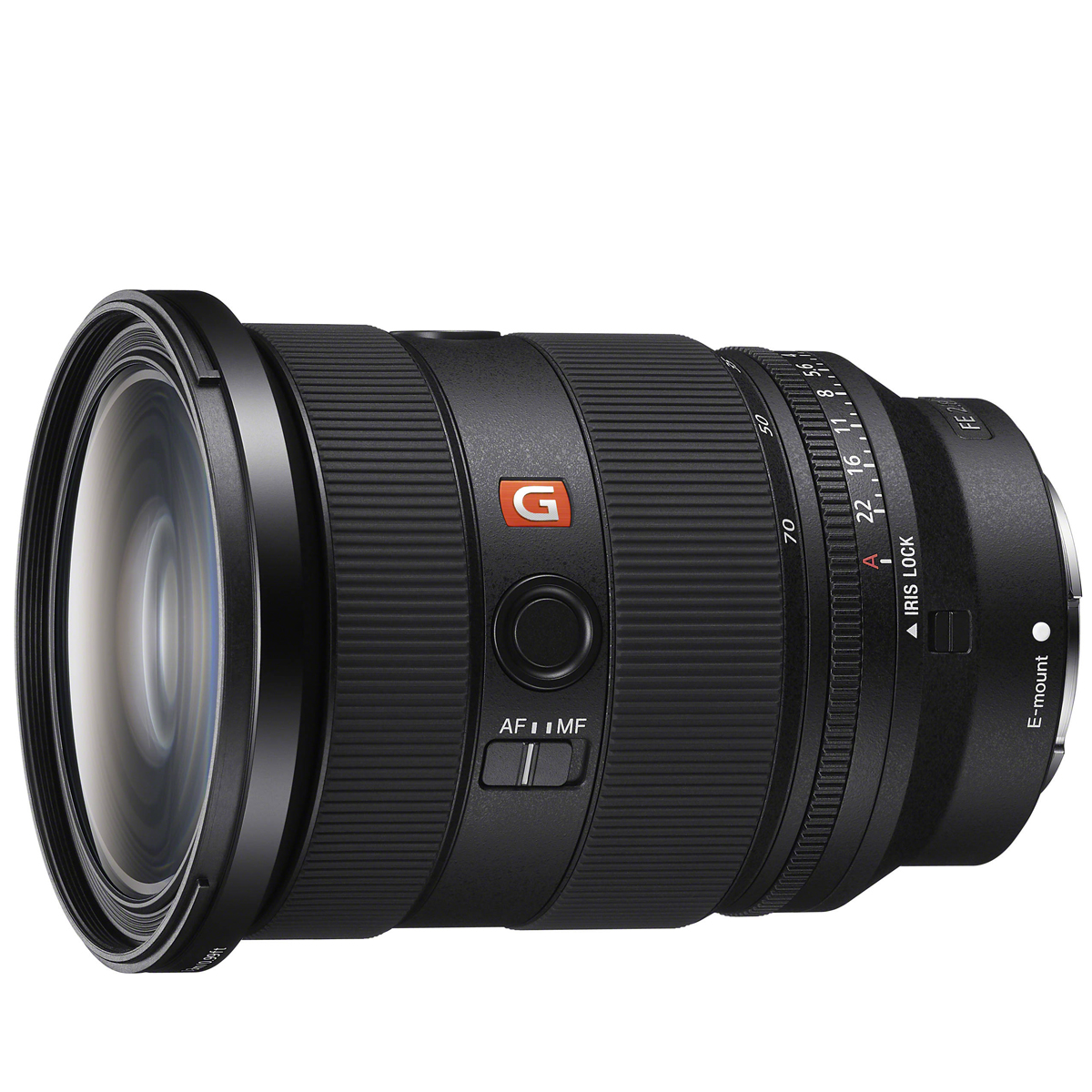
I love the stunning image quality, rock-solid build and easy handling that make this the ultimate standard zoom for A7R-series shooters. Read more below…
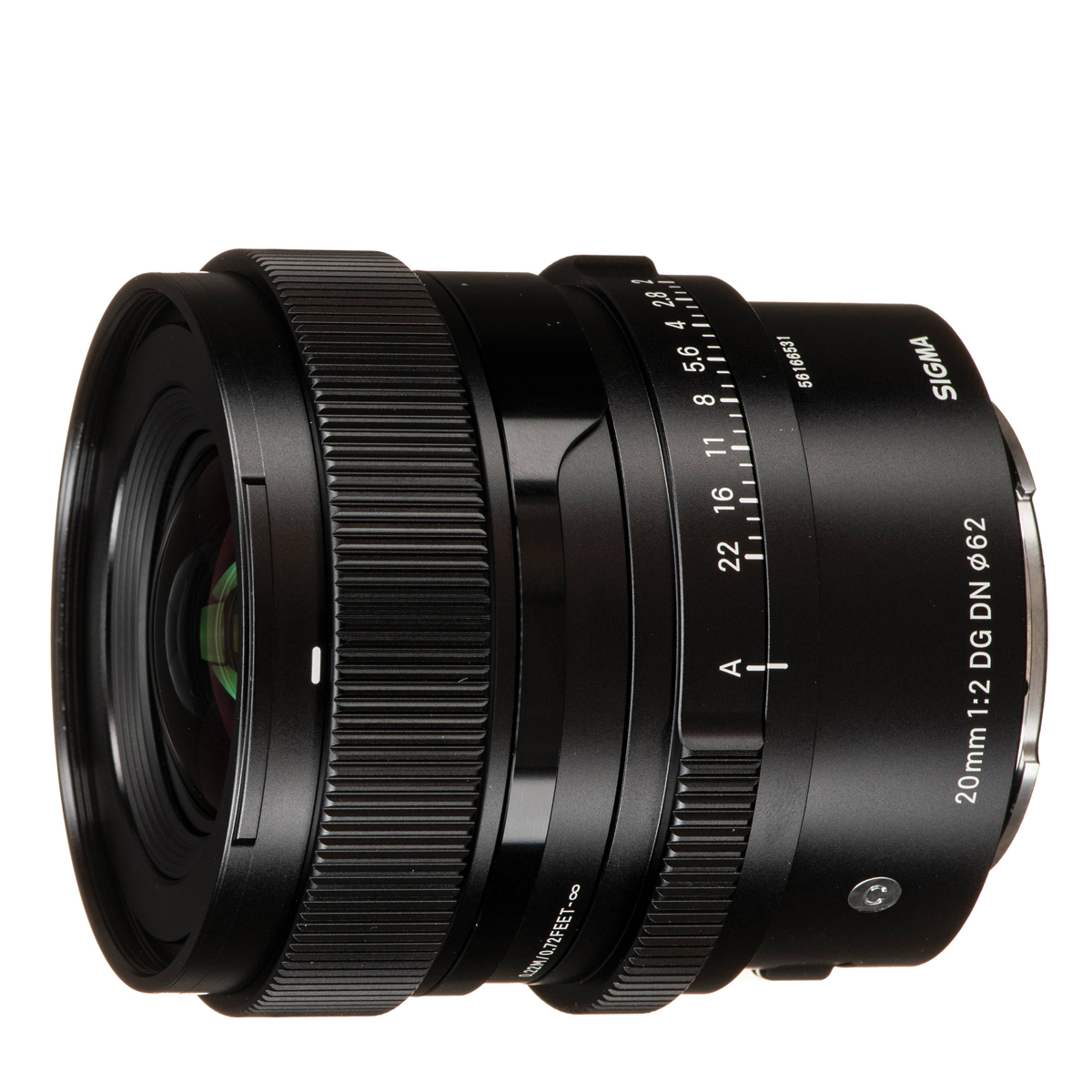
Ideal for epic scenes, I feel that this metal-bodied prime delivers exquisite images and offers touches like an aperture ring. Read more below…
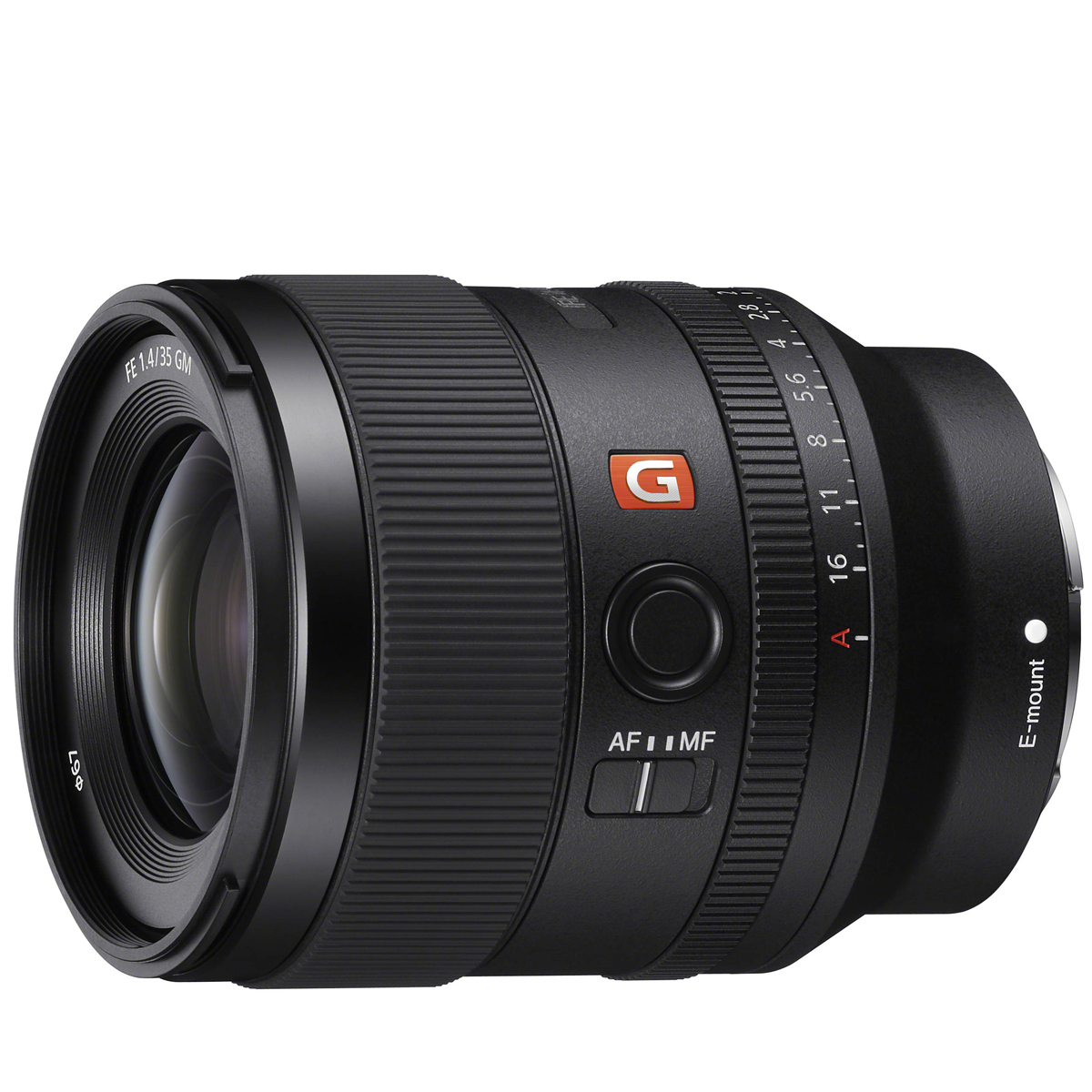
I find I need to nail the focusing when this prime is wide-open, but when I do, the results are simply spectacular. Read more below…
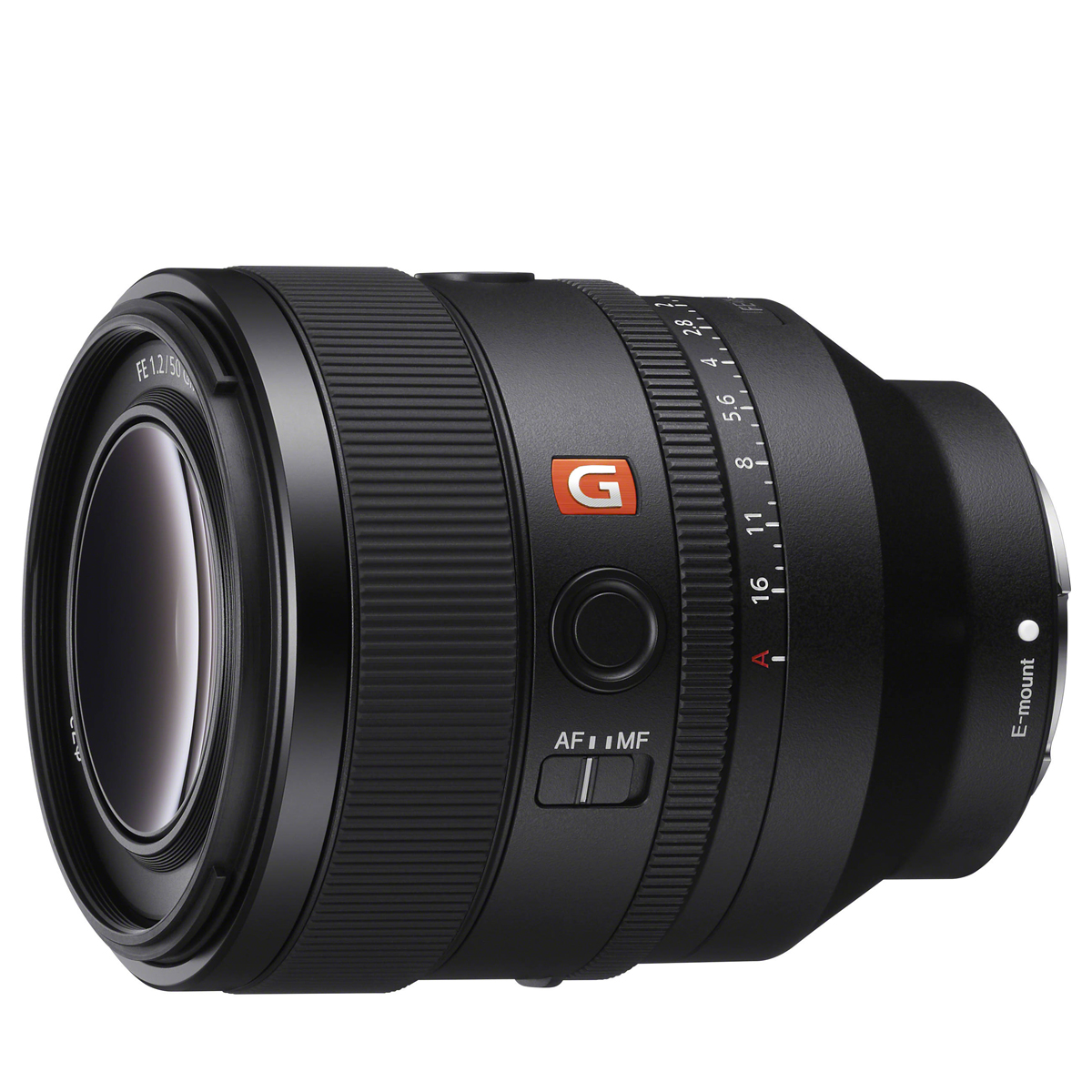
This nifty fifty is purpose-built to deliver sharpness – and boy, does it succeed. I have no complaints about the handling, either. Read more below…
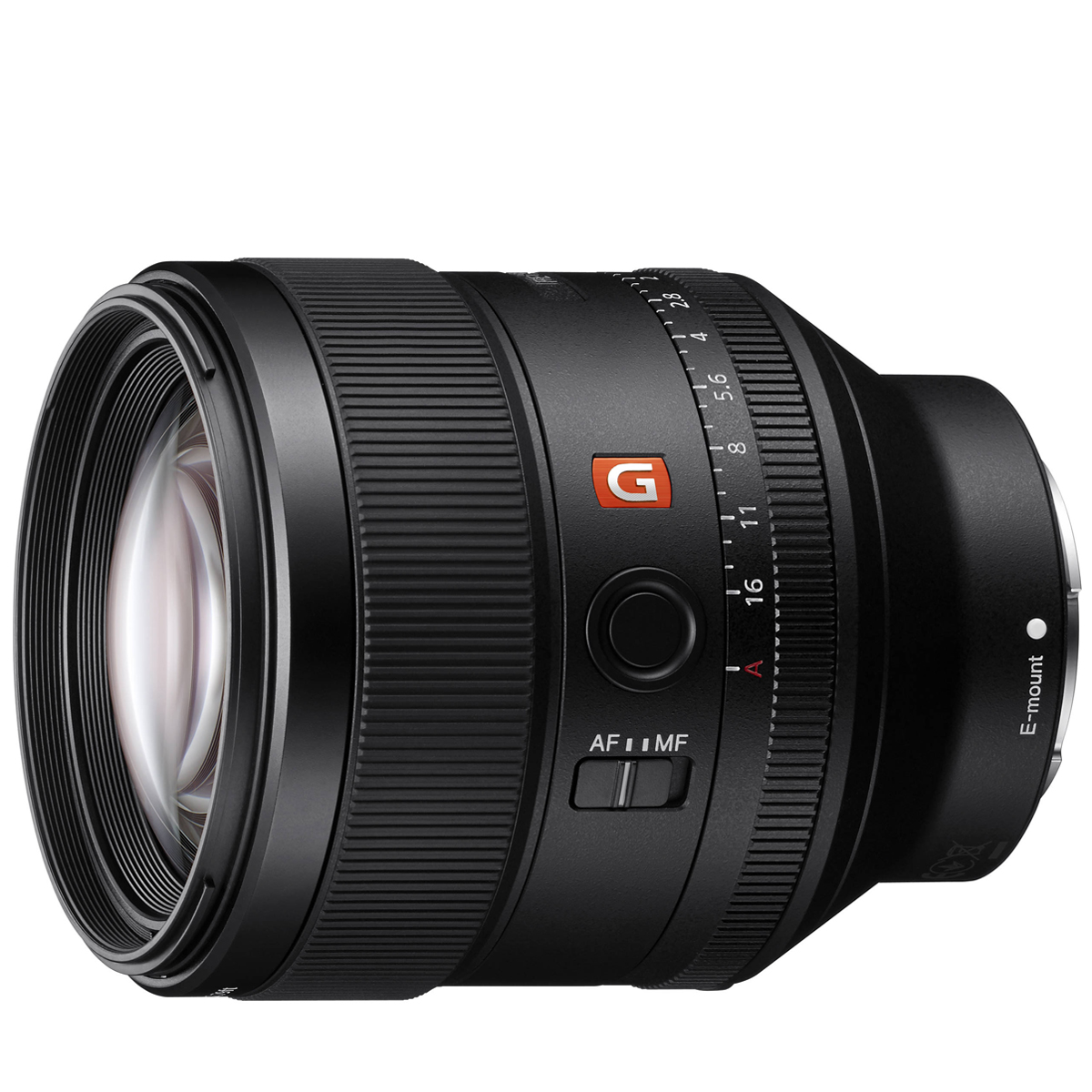
An 11-bladed aperture means I get delightful bokeh effects when I shoot portraits with this excellent prime lens. Read more below…
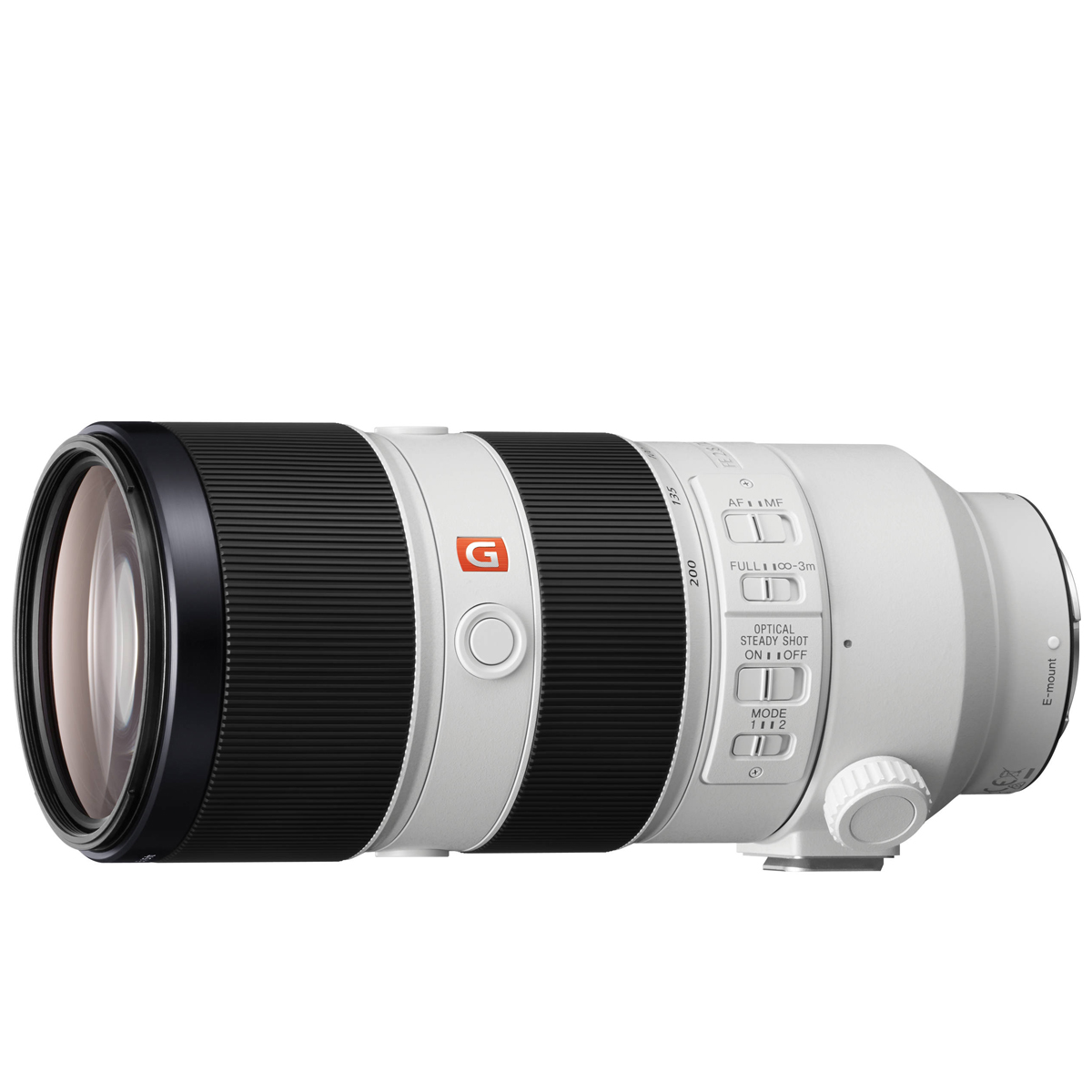
The wide aperture helps its zoom cope well with low light, while image stabilization comes in handy for handheld shots. Read more below…
View the full list ⤵
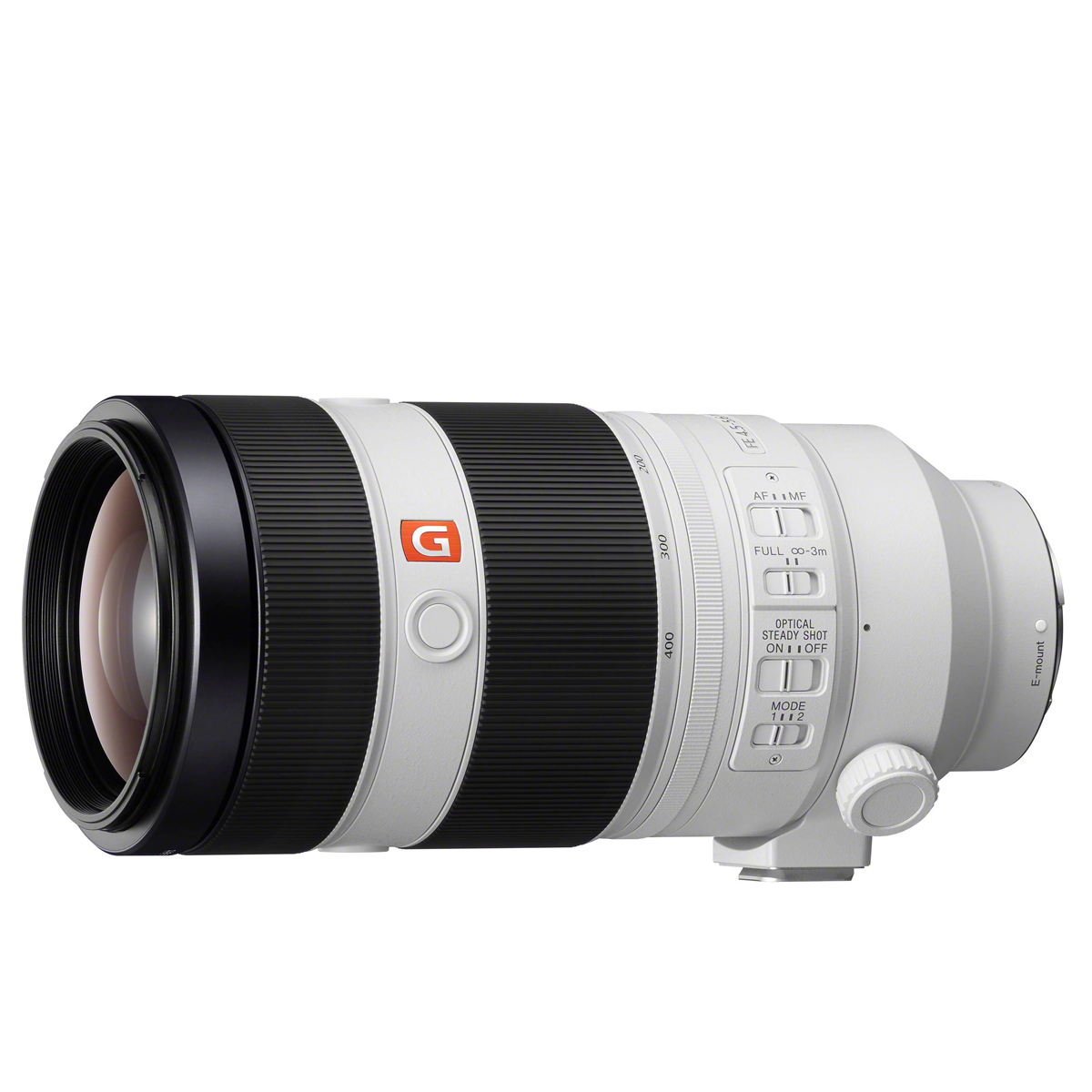
Blending superb sharpness with well-pitched handling, this is the ideal lens for a long day capturing sports or wildlife. Read more below…
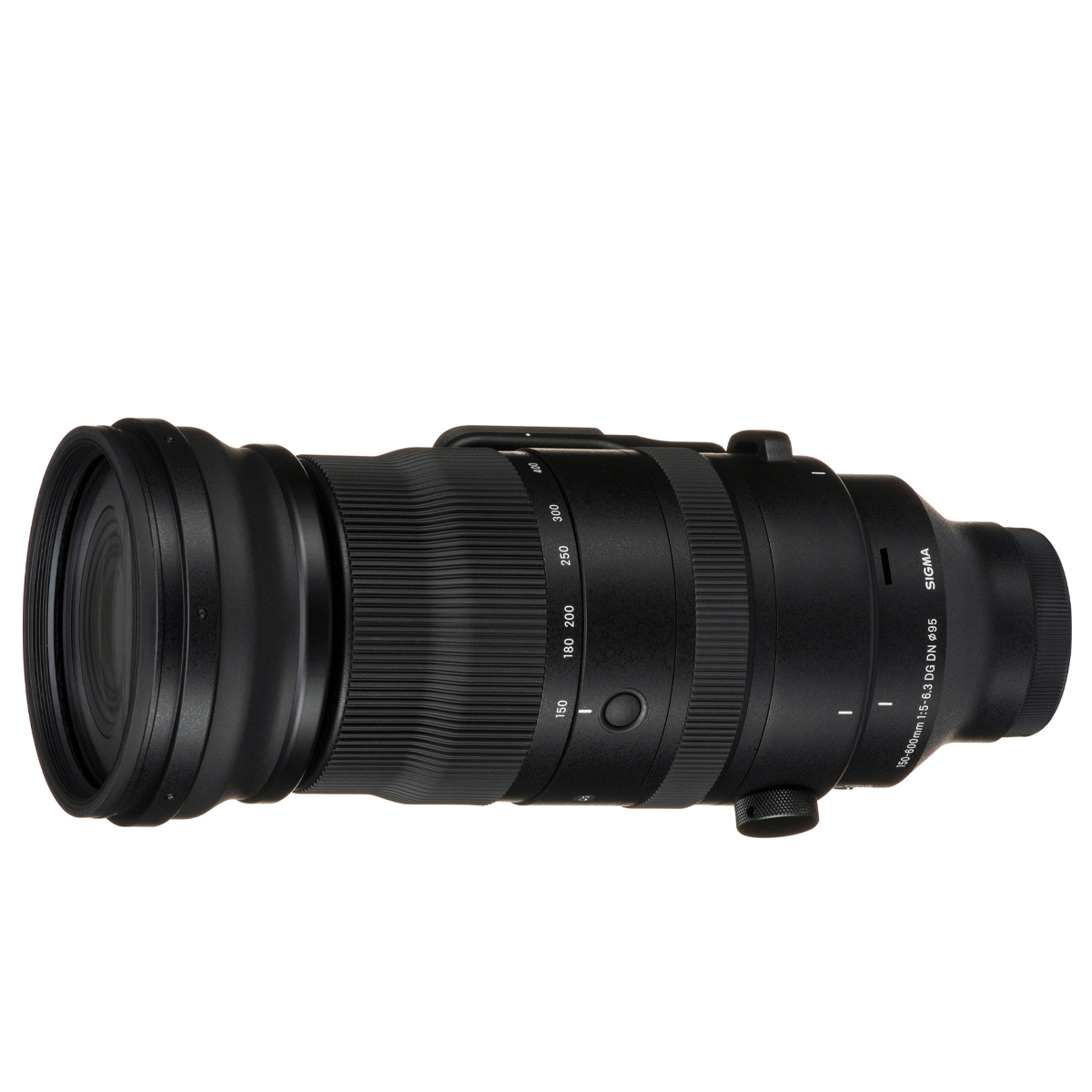
I find this upsized lens is just the job for distant subjects like birds and planes, with responsive autofocus and well-judged controls. Read more below…
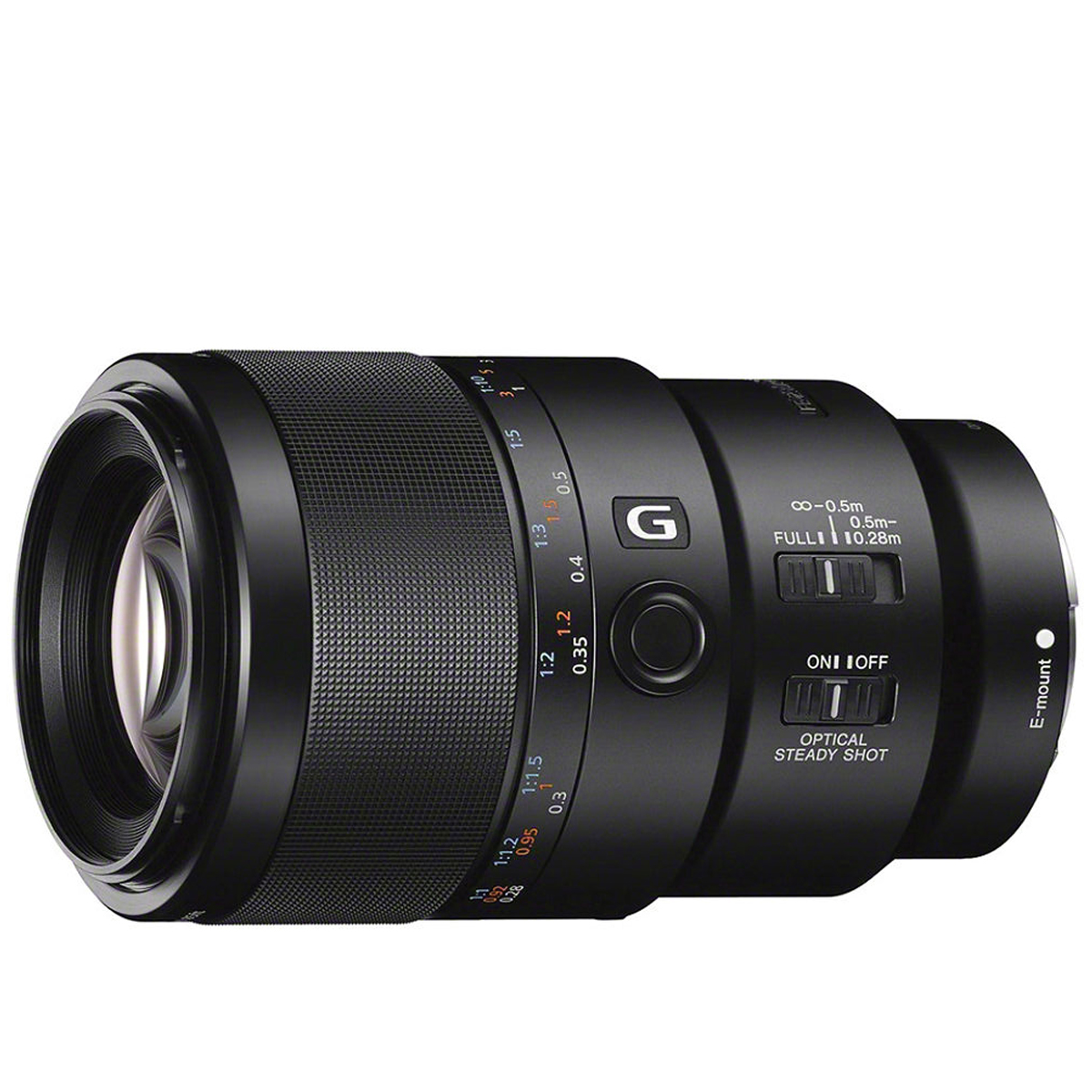
Enjoy lifesize magnification with this prime lens – and its wide aperture means it’s a pretty good portrait lens too. Read more below…
The best lenses for the Sony A7R III and A7R IV
Why you can trust Digital Camera World
Best everyday lens for the A7R III and A7R IV
Specifications
Reasons to buy
Reasons to avoid
Was there anything wrong with the original Sony FE 24-70mm F2.8 GM? No. Is this updated version better in every way? Absolutely. Honoring the name of its flagship G Master series, Sony has delivered a professional-grade zoom that is pin-sharp across its entire image frame, more comprehensively weather-sealed than the previous lens, and yet, somehow, is also 20 per cent lighter and 18 per cent smaller than the previous version. Witchcraft.
Handling has been revamped and is better than ever, the optical layout is completely revamped, and the lens boasts a new floating autofocus system powered by four XD (eXtreme Dynamic) linear stepping motors. It's incredibly precise, as we extolled in our review, and the technical quality is unimpeachable. Our exacting lab tests revealed a basically faultless lens across its zoom range.
Of course, all this quality comes at a cost. While I firmly think that the Sony FE 24-70mm f/2.8 GM II is worth its price tag, if your budget doesn't stretch that far, the original Sony FE 24-70mm F2.8 GM is still a solid buy. Also worth considering is the Samyang AF 24-70mm F2.8 FE, a trinity zoom that received glowing plaudits in our review for the sheer value for money it offers.
Read more: Sony FE 24-70mm f/2.8 GM II review
Best wide-angle lens for the A7R III and A7R IV
Specifications
Reasons to buy
Reasons to avoid
If you shoot landscape, architecture or interiors, or just prefer to take a wider perspective, the Sigma 20mm F2 DG DN | C is an ideal lens to pair with your Sony A7R camera. It's a small, metal-bodied and robust lens with loads of sublime handling features, not least of which is the aperture ring. A small point perhaps, but we always appreciate it when a lens-maker sees fit to add one.
With a high-quality optical path, the Sigma 20mm f/2 DG DN | C produces images of impressive sharpness and detail – in our lab tests, we found that sharpness was retained even when the lens was used wide-open at f/2, and that's what I found in my real-world testing as well. There is noticeable distortion, though it's correctable via software, and color fringing is pleasingly negligible even in the corners of the frame.
Read more: Sigma 20mm f/2 DG DN | C review
Best street lens for the A7R III and A7R IV
Specifications
Reasons to buy
Reasons to avoid
A 35mm f/1.4 lens is nothing new, but the Sony FE 35mm f/1.4 G Master is something quite special, if only for how good its results are at that maximum aperture. After all, more than a few lens have come with this aperture rating, while delivering wide-open results so soft that you might as well not bother. Not so with this G Master prime, as I discovered when I tested the lens – provided you nail the focusing, the wide-open image quality is astonishingly good. It really expands the utility of the lens.
A good 35mm is ideal for street and general-purpose photography, and as such, it needs an autofocus system that can keep up. The Sony FE 35mm f/1.4 G Master passes this test admirably thanks to its twin XD linear motors; these are friction-free, which means autofocus is just silky smooth in every aspect of operation, including its declickable aperture ring. Every aspect of the lens feels well thought-through, and its quality makes it the ideal complement for the high-resolution sensors of Sony A7R cameras.
If this lens is too expensive, I'd also thoroughly recommend the Sony FE 35mm f2.8 ZA Carl Zeiss Sonnar T*, a tiny prime lens at the same focal length that's less than half the price.
Read more: Sony FE 35mm f/1.4 G Master review
Best 50mm lens for the A7R III and A7R IV
Specifications
Reasons to buy
Reasons to avoid
The Sony FE 50mm F1.2 G Master is a spectacular nifty-fifty, boasting impressive sharpness right the way through its aperture range – yes, even at f/1.2. Sony has built this lens from the ground up with sharpness in mind, and its optical path includes three XA (extreme aspherical) elements; remarkably, these have been engineered to an accuracy of 0.01 microns (or one hundred-thousandth of a millimeter).
What this means, as I found in my testing, is that the lens performance is absolutely stellar – blowing away its rivals from the likes of Canon and Nikon. Our lab tests reported basically nothing in terms of imperfections, except for some pincushion distortion, and a little vignetting at f/1.2.
The handling too is excellent. It's a heavy lens, as it needs to be with specs like these, but not exceptionally so in the pantheon of 50mm f/1.2 lenses. This is an all-around fantastic optic, and if its asking price isn't too dear for you, it'll deliver nothing short of spectacular performance.
Alternatively, the Sony FE 50mm f/1.4 GM is more affordable, captures very good center-sharpness, and is both light and compact.
Read more: Sony FE 50mm f/1.2 G Master review
Best portrait lens for the A7R III and A7R IV
Specifications
Reasons to buy
Reasons to avoid
Like many portrait photographers, I swear by the 85mm short telephoto focal length, and if you're looking to shoot compelling images of people, the Sony FE 85mm f/1.4 GM II lens is one of the smartest buys you can make. Something that's critical in portrait photography is being able to produce images with smooth, attractive bokeh (the defocused areas of an image), and the G Master lens delivers that in spades thanks to its 11-bladed aperture.
Sharpness and image quality are exceptional, as I discovered when I tested the lens, and the high-grade construction means that handling is perfectly on point. If you need a cheaper alternative, the Sony FE 85mm f/1.8 still delivers a lot of the characteristics that portrait photographers are looking for.
Read more: Sony FE 85mm f/1.4 GM II review
Best telephoto lens for the A7R III and A7R IV
Specifications
Reasons to buy
Reasons to avoid
A classic 70-200mm telephoto zoom lens makes it into almost every professional photographer’s kit bag at one time or another, and many enthusiasts’ too. It’s so versatile that it performs well for a wide variety of subjects, perfect for weddings, events and low light concert photography because of its wide f/2.8 aperture which is constant throughout the zoom range, and ideal for portraits due to easy subject isolation.
The G Master quality shines through in this lens in the form of an XA (extreme aspherical) element and ED (Extra-low Dispersion) elements that keep color fringing and lens distortion to a minimum.
Read more: Sony FE 70-200mm f/2.8 GM OSS review
Best super-telephoto lens for the A7R III and A7R IV
Specifications
Reasons to buy
Reasons to avoid
I was hugely excited to see the coveted G Master line-up of lenses getting a 100-400mm optic, and the Sony FE 100-400mm f/4.5-5.6 G Master OSS did not disappoint. Blending superb sharpness with well-pitched handling that supports hand-held shooting, this is an ideal lens for long day capturing sports or wildlife on an A7R camera.
Indeed, in my tests and in our review, we couldn't say enough good things about this lens. Its impressively complex optical path gives it excellent image quality across the board, while the handling is nothing short of impeccable. The focus operates smoothly, the three customisable buttons give you real customisability, and the ‘zoom smoothness’ ring lets you adjust the torque required to move the zoom in accordance with your preferences.
Read more: Sony FE 100-400mm f/4.5-5.6 G Master OSS review
Best ultra-telephoto zoom for the A7R III and A7R IV
Specifications
Reasons to buy
Reasons to avoid
A complete redisign of the already excellent DSLR lens, the Sigma 150-600mm f/5-6.3 DG DN OS Sports is a great lens for bird photography, airshows and all manner of different sporting occasions.
The autofocus is excellent, able to take advantage of the latest AF subject-detection and tracking facilities of Sony cameras. The build quality of the lens is also impressive – while no one is going to pretend this is a lightweight lens, it handles well, with tactile zoom and focus rings and a series of on-body controls for functions like AF speed, stabilization intensity and, in an addition for the mirrorless version, Zoom Torque control to adjust the resistance of the zoom ring.
Read more: Sigma 150-600mm f/5-6.3 DG DN OS Sports review
Best macro lens for the A7R III and A7R IV
Specifications
Reasons to buy
Reasons to avoid
Fitted with helpful distance markers, this true to life macro lens has a 1:1 reproduction ratio (1.0x magnification) which a lens has to reach before it can be considered a true macro lens. It’s great value for money and focuses to infinity so it can be used as a standard lens too. It’s ideal for portraiture due to the longer focal length and wide f/2.8 aperture.
Optical SteadyShot (OSS) stabilization keeps the frame steady when shooting, which aids enormously when photographing macro subjects. A minimum focusing distance of 28cm brings tiny details to the fore and the autofocus/manual switch can be engaged via a pull on the focus ring itself.
Read more: Sony FE 90mm f/2.8 Macro G OSS review
Lab data and comparisons
The graphs below show the comparative performance of the lenses in this guide, based on our in-house lab tests. You’ll see that the Sony FE 85mm and FE 50mm G Master primes rule the roost for sharpness but the Sigma 20mm is also very impressive, especially for such a comparatively low-budget lens. Color fringing and distortions are generally pretty low, although the Sigma 20mm relies more heavily on automatic in-camera correction for distortion, which is available with the Sony A7R III and A7R IV.
Scores for sharpness and color fringing are averaged from data taken across the entire image frame, from the center to the edges and corners, throughout the aperture range. For zoom lenses, the scores are also averaged from data measured at all marked focal lengths, and the same applies to distortion. Bear in mind that these average values don't fully reflect specific areas of performance. For example, a zoom lens might have noticeable barrel distortion at its shortest focal length, which is less obvious when everything is averaged out. For more detailed graphs of each lens's performance, take a look at the graphs published in our full standalone reviews.
How to choose the best lens for the A7R III and A7R IV
The A7R III and A7R IV, like all Alpha 7 cameras, use the Sony E lens mount. Sony’s own E-mount lenses have either FE or E in their model names: all work on the A7R III and A7R IV. FE lenses are designed for use with full-frame Sony cameras, including the A7R III and A7R IV, so these should be your first choice. If you are buying a third-party E-mount lens, check that the lens is designed for use with full-frame Sonys.
Sony lenses with an E (rather than FE) prefix are designed for APS-C format cameras such as the A6000 series. On the A7R III and A7R IV, they produce a cropped image, so they’re not an ideal choice.
Check out our guide to the best Sony lenses if you want to know more
How we test lenses
The lens experts in our testing lab run a range of tests under controlled conditions, using the Imatest Master testing suite. Photos of test charts are taken across the range of apertures and zooms (where available), then analyzed for sharpness, distortion and chromatic aberrations.
We use Imatest SFR (spatial frequency response) charts and analysis software to plot lens resolution at the centre of the image frame, corners and mid-point distances, across the range of aperture settings and, with zoom lenses, at four different focal lengths.
There's more to it than just the technical side, though! Beyond the lab, our reviewers test lenses in real-world environments – and sometimes on professional shoots! We work with lenses both indoors and outdoors, in studio conditions and in natural light, with as many different subjects as is possible (or appropriate – there's no point testing a landscape lens' ability to shoot a portrait!).
We take into account everything from handling and ease of use to speed of autofocus and the overall quality of the images produced.
Find out more about how we test and review on Digital Camera World
The best camera deals, reviews, product advice, and unmissable photography news, direct to your inbox!
Jase Parnell-Brookes is an award-winning photographer, educator and writer based in the UK. They won the Gold Prize award in the Nikon Photo Contest 2018/19 and was named Digital Photographer of the Year in 2014. After completing their Masters Jase has spent a good chunk of two decades studying and working in photography and optics shooting and writing all over the world for big-name brands and media outlets. Now the Channel Editor for Cameras and Skywatching at Space.com their speciality is in low light optics and camera systems.
